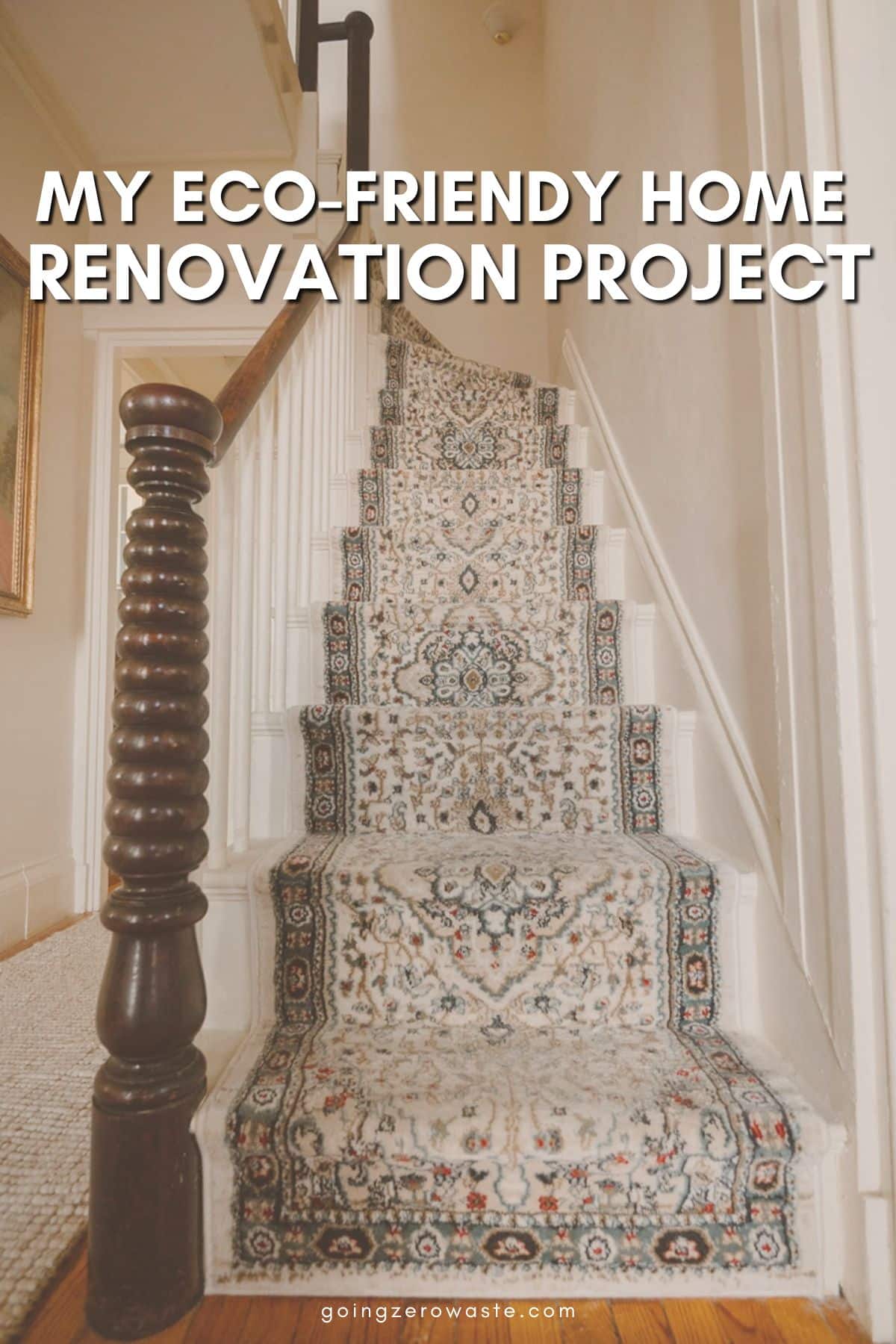[ad_1]
Last Updated on August 27, 2024
I recently moved to Maine and bought a fixer-upper home. The goal? Sustainable home restoration and interior design choices.
I wanted to create something timeless and stay true to the house’s almost 200-year-old heritage. It’s an old beauty!
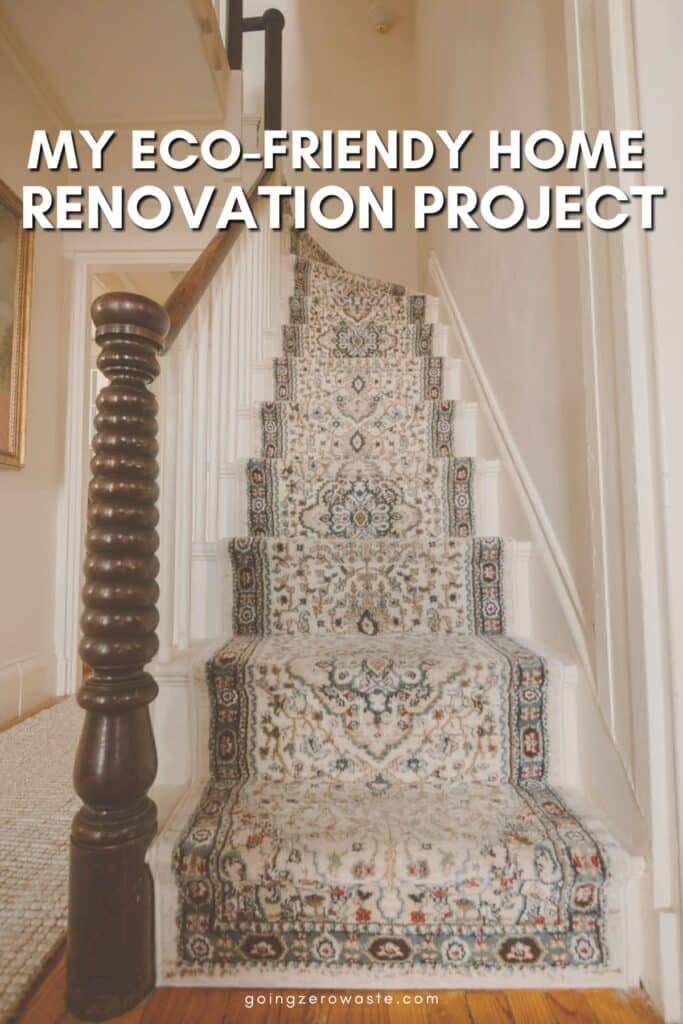
I was so afraid I wouldn’t feel a connection with our house, but I’ve absolutely fallen in love with the place. And renovating it has been a lot of work, but well worth the effort!
Our kitchen started out a strange yellow and brown color, and now it’s green. We removed SO much wallpaper and re-carpeted the stairs. I got a lot of secondhand furniture items for the house. So it’s come a long way.
The challenge was keeping the renovation as sustainable as possible. Home renovation creates a lot of waste. I spent months peeling up wallpaper and I was filling up these massive bags of trash.
But we’re making decisions that are going to be a lot more timeless and are going to prevent a lot more waste in the future.
For example, I recently repaired a chair for my dining room table. In the past, I would’ve been hesitant to buy wood glue because it came in a plastic bottle. But now, I’m focusing more on repairing my items, which ensures I’m keeping major items out of the landfill.
If you’re thinking about home restoration and want to learn more about my process, you’re in luck! I interviewed Maddy Kozoyed, interior designer and owner of Whatsoever Things Are Lovely (WTL), who helped me design my newfound space. Here’s what she had to say.
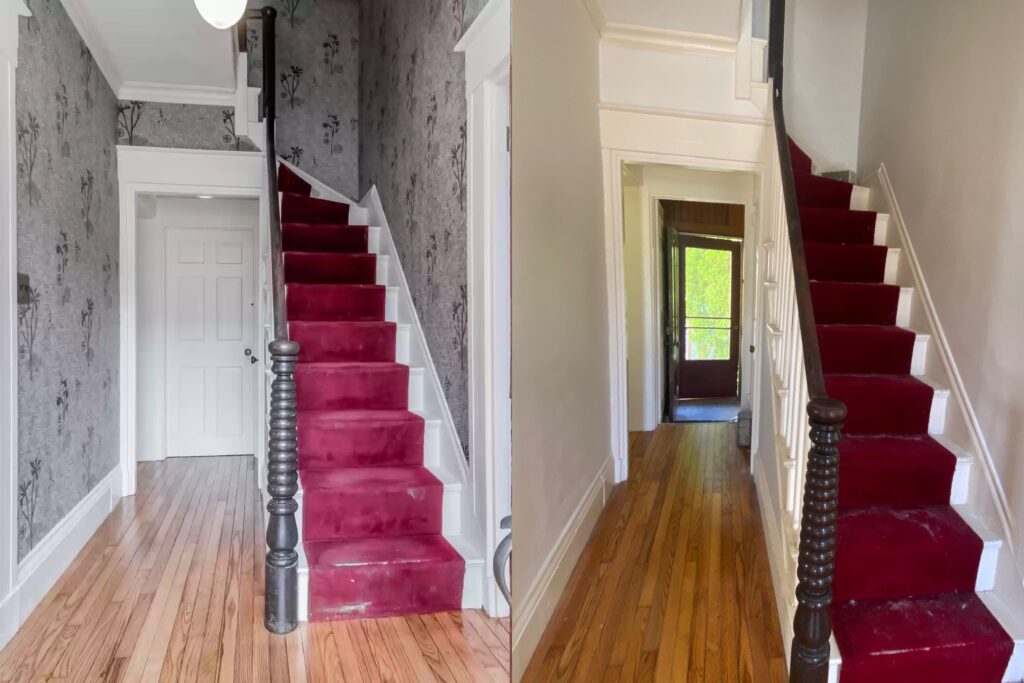

what is the difference between renovating and restoring?
The difference between renovating and restoring is this: Renovating repairs and updates an area, while restoring brings the space back to its original condition (often utilizing original materials).
According to Kozoyed, “as a sustainable [interior] designer, when I think of renovating, I usually think of the immense amount of waste that is created to make a space brand new.”
“With restoration, I think preservation becomes the focus – using what you have and updating what needs to be changed through renewal versus replacing. I think the terms probably have different nuances to others in the industry, especially if there are specific historical requirements in your area/neighborhood to restore vs renovate.”
In a way, I suppose I’ve done a bit of both on my home. We definitely had to update some of the rooms (mainly the kitchen) because we had this strange yellow and brown cabinet situation we just couldn’t get behind.
But some areas we’ve just been focusing on restoring back to its former glory. Or at the least, honoring its almost 200 year old history. For example, I’ve definitely used the paint from the original homeowners to touch up various parts of the home.
“Regardless of what we call it,” Kozoyed continues, “I think the goal of all home changes should be to achieve your vision while keeping the planet in mind!”
what is the meaning of home restoration?
Kozoyed says “when I think of the term home restoration, I think preservation becomes the focus – using what you have and updating what needs to be changed through renewal versus replacing. In historical homes, this usually denotes maintaining or rebuilding certain features or character in the style of time period of the build.”
Essentially, you want to maintain the home’s heritage and rich culture through the highest level of authenticity and replication you can.
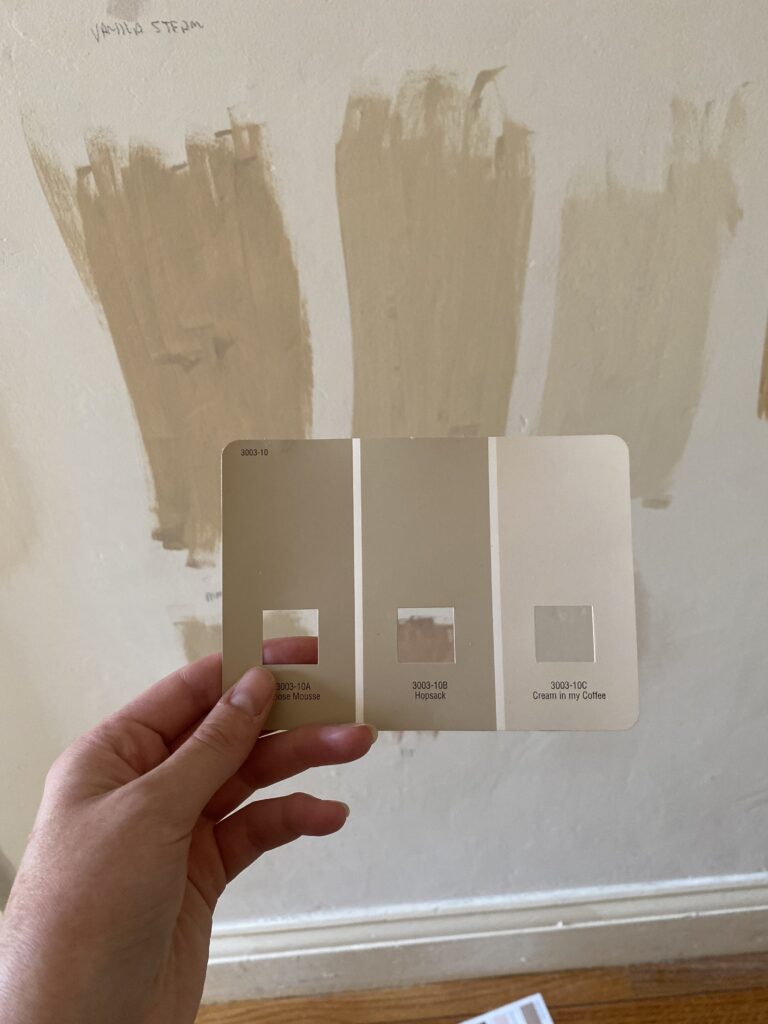

what is the first thing to do when restoring a house?
The first and biggest step to restoring a house? Talking to the right people.
Kozoyed says, “anytime I start a home project, I always take time to TALK IT OUT. Contractors measure twice and cut once, I design twice and do once! Creating a design plan is the best place to start any home project, whether with a designer or tackling alone.”
In other words, you want to create a clear vision of what you want to achieve and talk to the right people about it, like a trusted designer and a contractor.
“My design philosophy is to start with the ideal feeling that you want to experience in your space. That becomes the north star for all decisions, both functional and stylistic.”
“While we all think we like certain styles, a style is really just a combination of stylistic and functional elements put together to create a feeling! By starting with identifying the feeling you want first, you’ll easily make the right, aligned decisions when it comes to the way the space should function and look, reducing the waste of wrong decisions along the way!”
For example, if you want your home to feel cool and mellow, you may opt for more cool hues like blues, greens and purples.
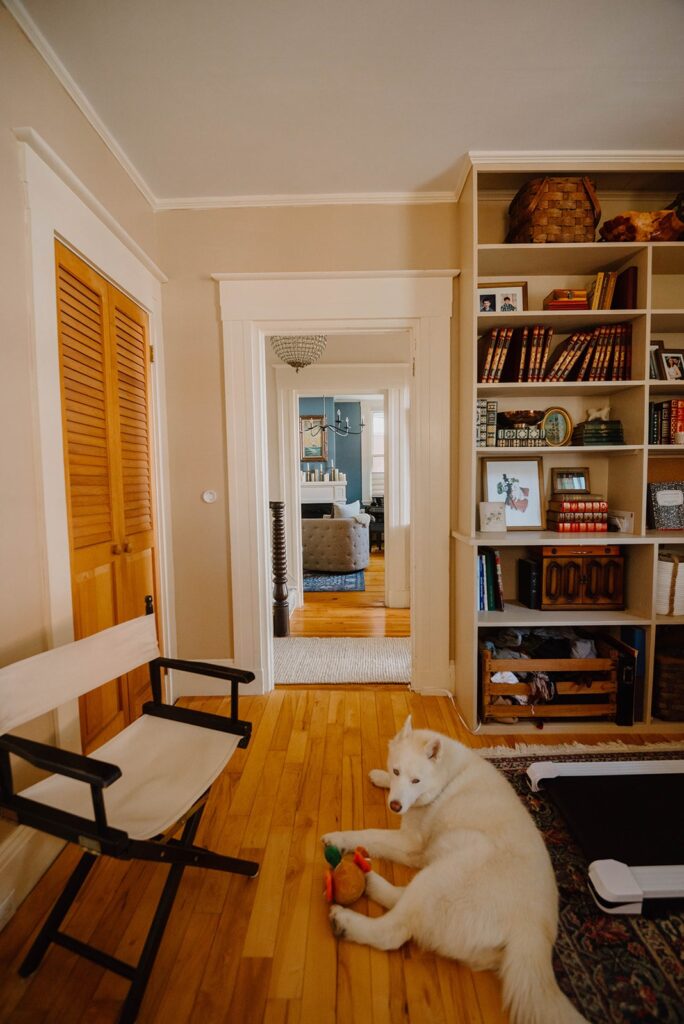

what are some sustainable furniture companies you recommend?
The most sustainable furniture around is the furniture you already own!
Kozoyed says “most importantly, shop your own home,” but when that isn’t an option, “look locally and secondhand at the thrift store, on secondhand marketplaces/apps, and Buy Nothing Groups!”
“However, if and when you buy new, my favorite sneaky sustainable family of brands is West Elm and Pottery Barn! [They’re] sneaky because I feel like lots of people aren’t aware of this! They label their Fair Trade certified products, many of which make up their classic furniture lines. They also label pieces made from recycled or sustainable materials, and all other certifications, like FSC, Greengaurd, OEKO-TEX, etc.”
You’ll want to look for brands that utilize recycled, organic and fairtrade materials. Transparency is important when it comes to where the materials are sourced, and how they were manufactured, so be sure to do your research before buying new.
“I also love Made Trade for a one stop shop for sustainable furniture and home goods. And newer brands are growing into multiple lines, including Thuma for my favorite bed of all time, Floyd and Sabai for sustainable couches and living room essentials, Clare for the prettiest paint, and Our Place for the kitchen.”
RELATED: 12 Of The Best Sustainable Furniture Companies
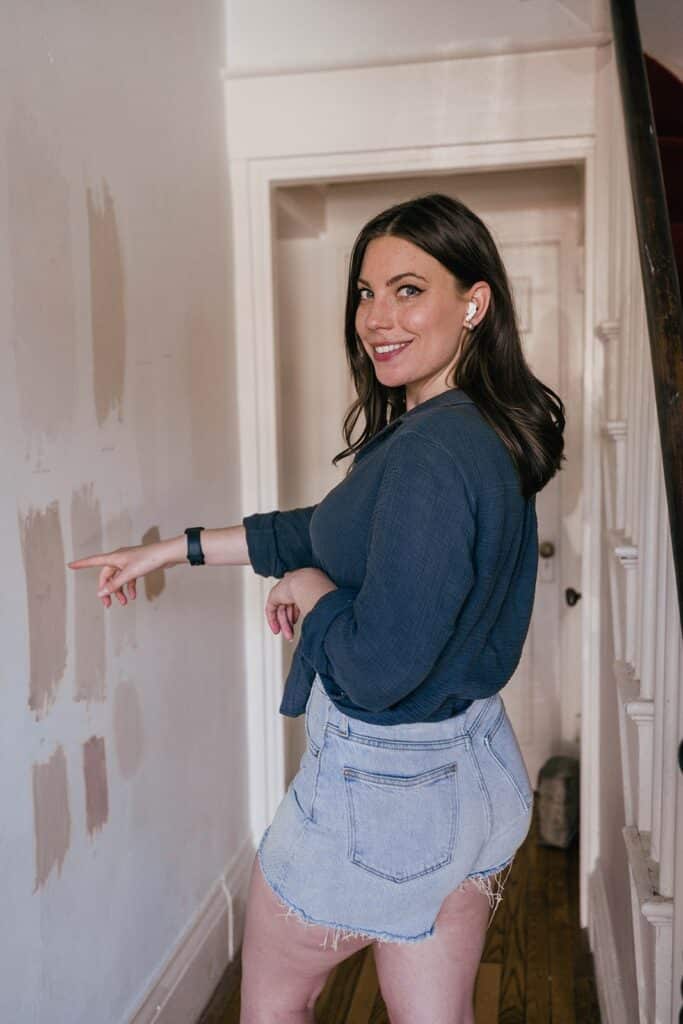

how can people source building materials like wood, paint and tile sustainably?
According to Kozoyed, “making time and space to salvage your own home’s materials and look locally and secondhand will help minimize the impact of any home project. I love looking for overstock at local tile and paint stores. Also, architectural salvage stores like Habitat Restore and Buy Nothing groups are overflowing with scrap materials.”
One of the rooms of my house has blue walls, a gray door, green tiles, and a cream closet. It’s a bit all over the place color wise, so I think I might repaint the walls. I have a local Restore that has a recycled paint section and I’m thinking maybe a sage green could work nicely.
Definitely check to see if you have a local reuse store near you – they could stock building materials at discounted prices to help with your next home project.
“If you’re buying new, look for brands that have sustainable certifications and align with your values, like FireClay, a B-Corp and Climate Neutral certified handmade tile brand, or Clare for zero VOC, Greengaurd Gold certified paint.”
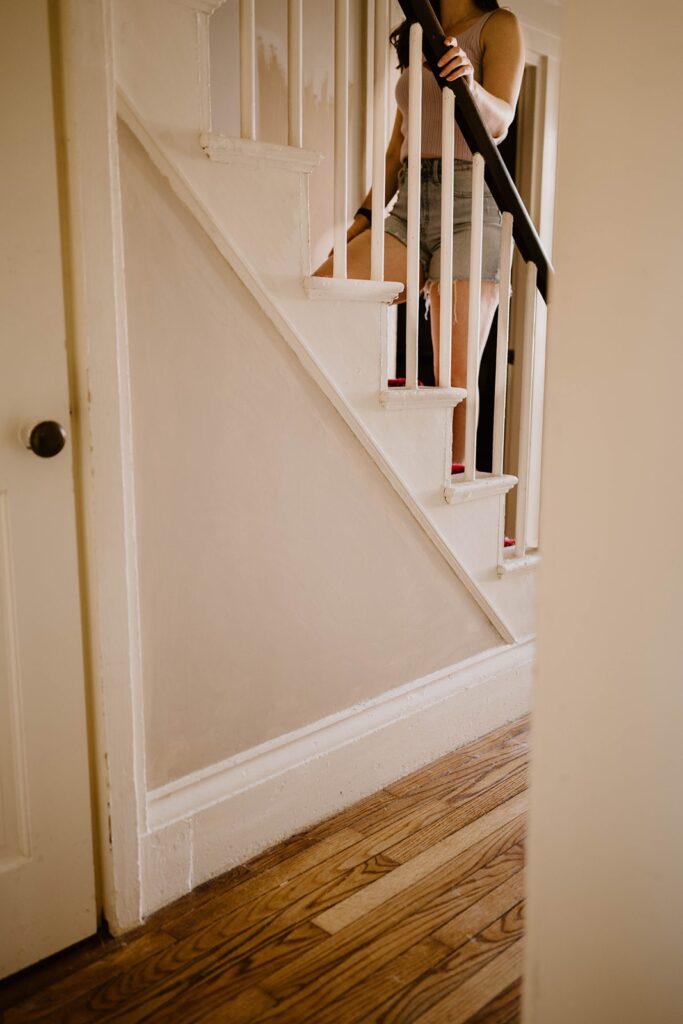

what are some easy sustainable interior design tips you have anyone can do?
Kozoyed has two big tips for easy sustainable interior designing.
Her first trip is following a Triple F design framework, which entails an ideal feeling, functional details, and form.
“I deeply believe in my Triple F design framework, as it works for every space, every size project, and every budget. Start planning with an ideal feeling, then consider functional details, then finally and lastly style. Think feeling, function, then form, the three Fs!
“This framework helps you figure out what you REALLY like. There’s a whole industry of photo stylists, content creators, designers, and architects whose job it is to curate the aspirational glimpses of styles we see online, in magazines, and in person. There are so many variables to consider, that blindly adopting a certain style like “traditional”, “coastal”, or “modern” can lead to costly and wasteful decisions.”
Her second tip? Creating a plan for designing a space, instead of rushing.
“It’s almost always better to wait to invest in the item you really like! When we try and design fast and without a plan, we substitute cheaper and available alternatives to what we really crave.”
“I’ve found that my clients usually eventually turn back to the original dream piece, and end up scraping the alternative to the landfill or overflowing thrift store. So trust your intuition, hold out for the dream piece if you can! It’s powerful to be physically surrounded by items that are bring you inspiration, peace, and joy!”
what’s your favorite part about sustainable interior design?
“The BEST part of my job is having a client feel like I GET them, and can help them physically bring to life their vision in a way that aligns with their goals, habits, values, and the planet. Kathryn gave me the best compliment I’ve ever received when she said working together was “like therapy for my home!” Mission accomplished!”
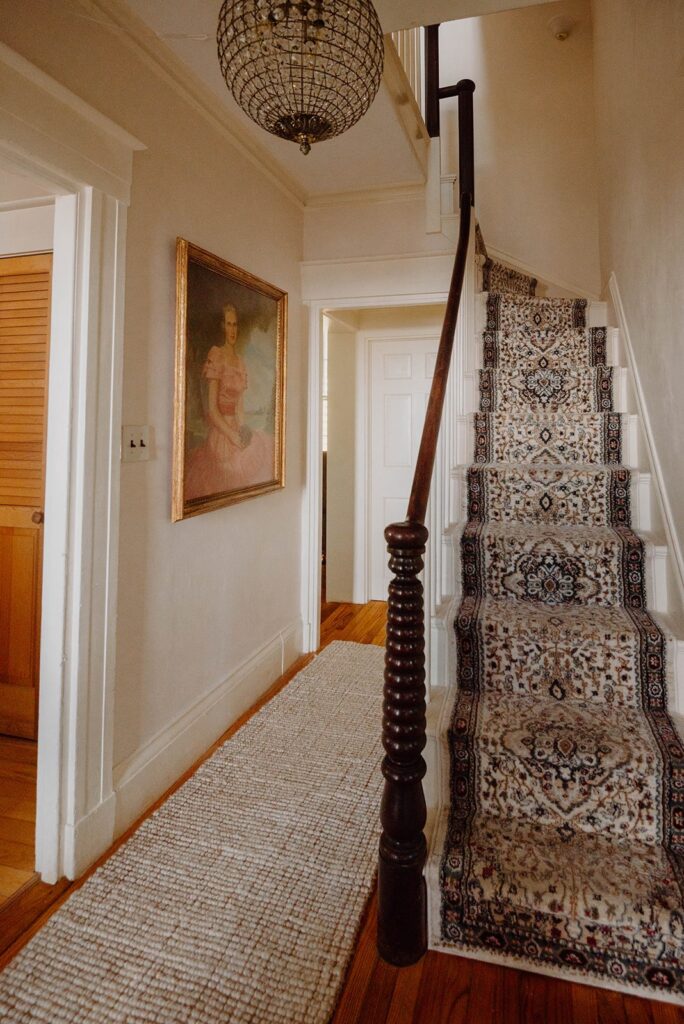

what’s the most challenging part of sustainable interior design?
“Anyone trying to make more sustainable decisions at an individual level feels the pressure of comparison, and questions whether their actions make a difference in the face of governments and corporations that refuse to change (hi, it’s me, I feel the same!).”
“It’s EASY to find cheap, plastic, disposable home items on Amazon and other giant online retailers. They’re so readily available, it can feel daunting to find alternatives that better align with your values. But I trust that investing in long term pieces and styles I LOVE will help me spend and waste less over time.”
Fast furniture is quickly becoming a problem clogging our landfills: According to the Environmental Protection Agency (EPA), Americans alone threw out over 12 million tons of furniture and furnishings in 2018 (up from 2.2 million tons in 1960), and over 80% of it ended up in landfill. Lets not forget the carbon emissions caused by manufacturing and shipping.
For this reason, it’s important we choose pieces we intend to use for a long time – even better if they’re made to last and can be easily washed or repaired!
“…It’s been said that taking action is the antidote to anxiety, and I find that aligning my personal consumption decisions with my values helps me face my eco-anxiety every day.”
what’s one thing you recommend to everyone before they start their eco-friendly home renovation journey?
“Get to know yourself and your space!” Kozoyed encourages, “and think long term. If you’re staying for a good time and a long time, think about who you want to be over the next 5-10 years, so your investment into your physical space has the biggest impact and helps you get there!”
To learn more about sustainable interior design, be sure to check out Maddy Kozoyed’s website Whatsoever Things Are Lovely (WTL). If you’re thinking of eco-friendly home restoration or renovation, consider consulting with her for more personalized tips.
[ad_2]
Source link
